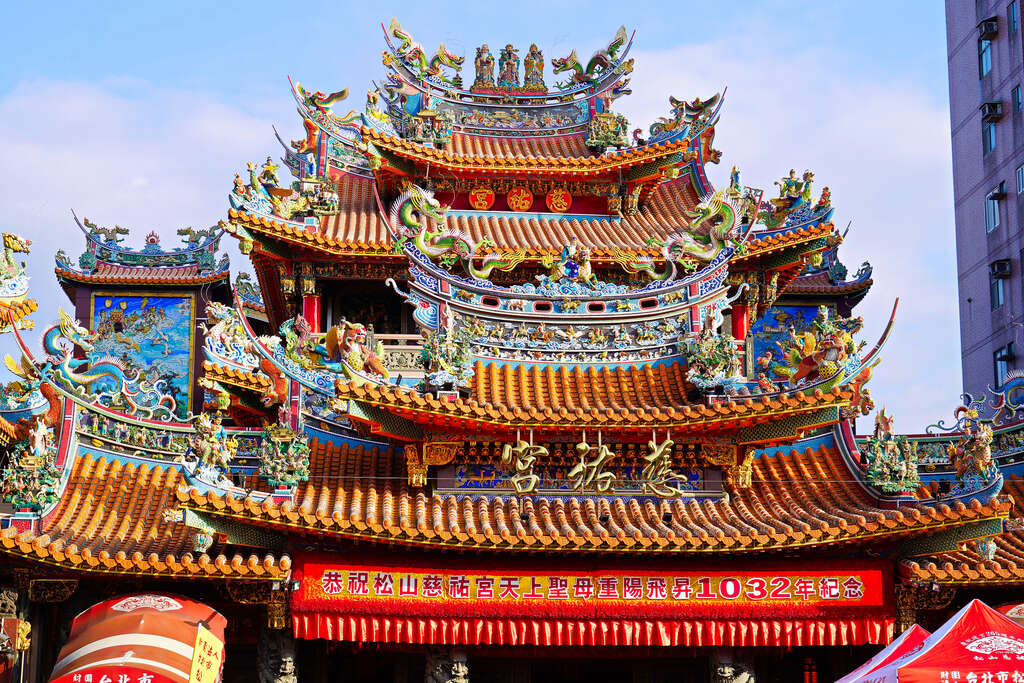Songshan Ciyou Temple Introduction
Ciyou Temple was built in 1753, making it over 200 years old, and is primarily dedicated to the Black-faced Mazu. According to legend, after attaining immortality, Mazu often helps distressed boats at sea, making her a widely worshipped deity in Taiwan. The temple's architecture features a six-story square structure, and the main hall, known as the Sanchuan Hall, is quite solemn and magnificent. The roof ridge is adorned with two dragons presenting blessings, prosperity, and longevity, signifying protection. The stone lion guardians at the Sanchuan Hall date back to 1803 and were once discarded during renovations but were later rediscovered and placed in front of the hall. The lions display a rare traditional representation of "the male lion with an open mouth and the female lion with a closed mouth," making them treasures of the temple. In addition to stone sculptures, the wooden carvings here are vibrant and lifelike, depicting flowers, animals, and figures, contributing to the temple's splendor. Ciyou Temple has always been a spiritual refuge for the residents of Xikou Thirteen Streets. Every year on March 23, the birthday of the Heavenly Mother, the Thirteen Streets community coordinates with Ciyou Temple to form three routes (East, South, and North), where shops and residences along the way prepare offerings or fresh flowers and fruits to welcome Mazu during her巡境procession, creating a lively atmosphere throughout the Songshan District. In recent years, Ciyou Temple has remained a focal point in the area, not to mention the bustling Raohe Street Night Market right next to it, ensuring a vibrant scene.
















